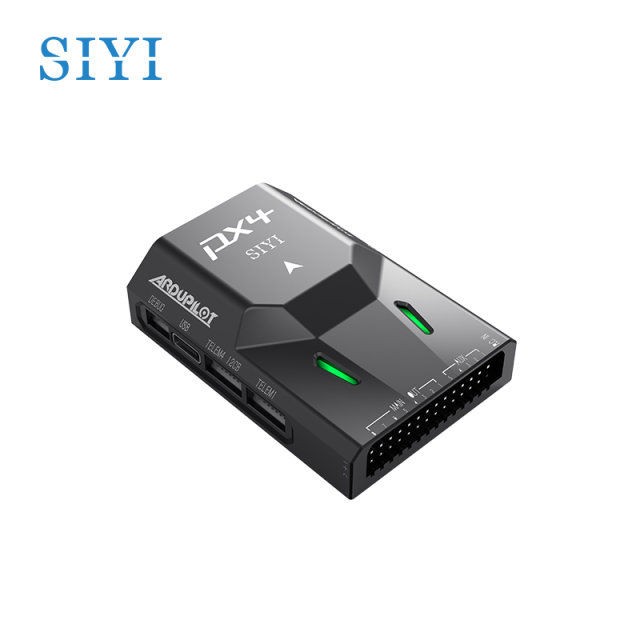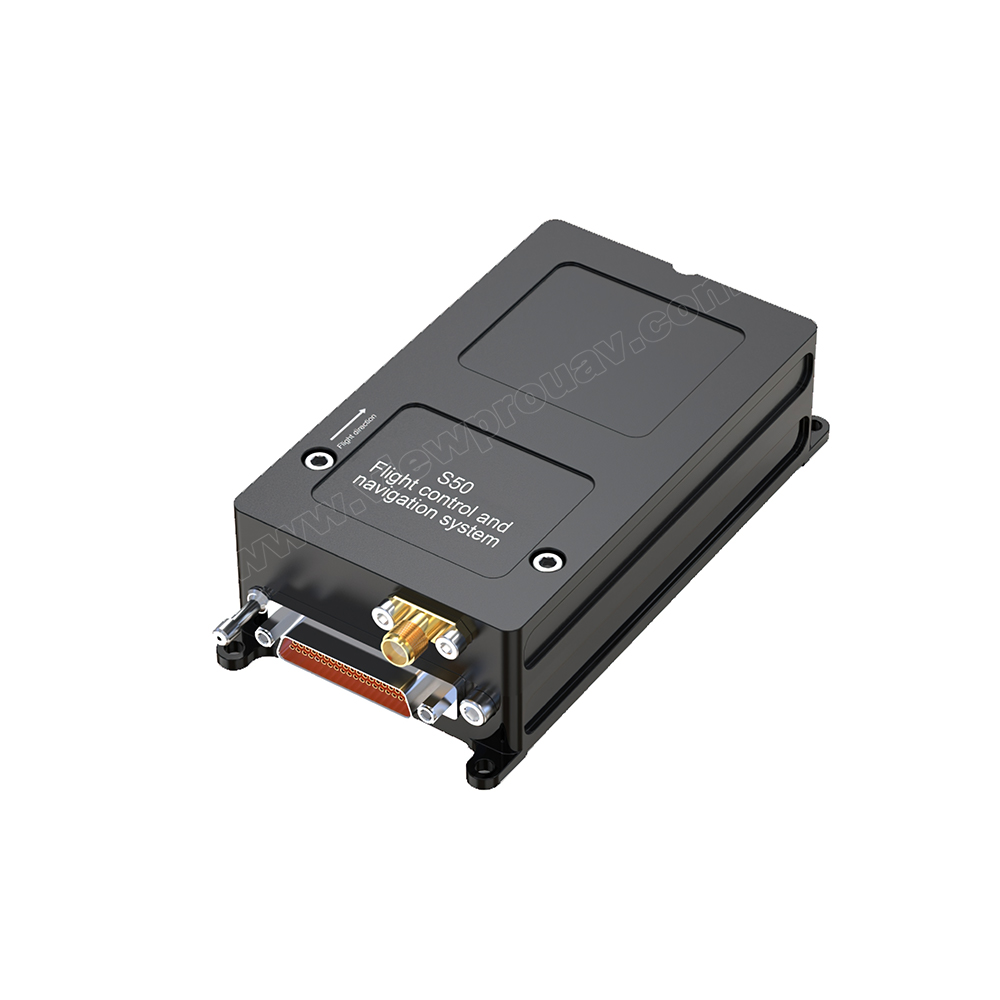Trustworthy Drone Navigation with SparkNavi Drone Flight Controller and GNSS/INS Made in Taiwan
Trustworthy Drone Navigation with SparkNavi Drone Flight Controller and GNSS/INS Made in Taiwan
Blog Article
Recognizing the Essential Functions and Functions of a Drone Trip Controller for Ideal Airborne Performance
The flight controller functions as the crucial element in a drone's architecture, orchestrating its movements and making sure stability through a sophisticated interplay of data and sensing units processing. Understanding the necessary features and functions of these controllers is vital for optimizing airborne performance, as they determine not only navigational precision but likewise general safety and integrity. With advancements in modern technology, the landscape of flight controllers is rapidly evolving, prompting a closer examination of what really specifies optimum functionality in this crucial system. What effects do these developments hold for both enthusiasts and professionals in the field?
Review of Flight Controllers
When checking out the world of drone modern technology, comprehending flight controllers is important for both hobbyists and specialists alike. Trip controllers work as the mind of the drone, managing its activities and making sure security during flight (SparkNavi drone flight controller and GNSS/INS made in taiwan). They refine data from numerous sensors, consisting of gyroscopes, barometers, and accelerometers, to keep balance and respond to pilot inputs successfully
The architecture of trip controllers can vary dramatically, ranging from standard variations developed for entry-level drones to sophisticated systems outfitted with sophisticated attributes for professional applications. The integration of GPS capacities makes it possible for accurate navigation and positioning, while programmable firmware enables users to personalize flight features to suit their certain requirements.
In addition, trip controllers are pivotal in promoting interaction between the drone and the remote, making it possible for real-time changes and telemetry data transmission. Recognizing the different kinds of trip controllers, including multi-rotor, fixed-wing, and hybrid systems, is vital for selecting the suitable model for an offered application. Inevitably, an extensive understanding of flight controllers not just boosts the flying experience yet also makes the most of the efficiency and safety of drone operations.
Secret Functions of Trip Controllers
Flight controllers play an essential function in taking care of a drone's flight characteristics by performing several vital features that make certain stability and responsiveness. One of the primary features is the stabilization of the drone's positioning and elevation. This is achieved through the combination of various sensors, including gyroscopes, accelerometers, and barometers, which continually keep an eye on the drone's placement and activity.
.jpg)
One more necessary function is the handling of control inputs from the pilot or self-governing systems. The flight controller analyzes these inputs and readjusts the drone's electric motor speeds accordingly to attain the desired trip path. This consists of managing yaw, roll, and pitch, which are essential for ability to move.
In addition, flight controllers are furnished with sure devices. These features are developed to react to crucial circumstances, such as reduced battery degrees or loss of signal, by starting predefined activities like returning to the launch factor or hovering in position.

Necessary Attributes to Take Into Consideration
Countless essential features need to be taken into consideration when choosing a drone flight controller to make certain optimal efficiency and dependability. One essential element is the controller's processing power, which establishes its capacity to handle intricate trip formulas and real-time information processing. A higher handling capacity enhances responsiveness and security during trip.
One more crucial attribute is the number of supported trip modes. A versatile flight controller must use different modes, including acro, altitude hold, and GPS-assisted settings, accommodating different pilot skill levels and functional situations. Additionally, the visibility of integrated security attributes, such as fail-safes and geofencing, can significantly boost functional safety.
Compatibility with numerous communication procedures is additionally essential, as it makes sure seamless assimilation with other devices and peripherals, such as remote controllers and telemetry systems. Additionally, the controller's firmware should be easy to use and consistently upgraded to incorporate brand-new functions and optimizations.
Integration With Sensors and Equipments
A trip controller's efficiency is greatly influenced by its ability to integrate with various sensors and systems. This assimilation is essential as it makes it possible for the trip controller to obtain real-time information essential for reliable flight management. Key sensing units consist of GPS, inertial measurement units (IMUs), barometers, and magnetometers, each giving essential details pertaining to the drone's positioning, setting, and altitude.

Additionally, advanced trip controllers support assimilation with haul systems, including electronic cameras and various other sensors, making it possible for improved functionalities such as independent navigating and obstacle avoidance. This interconnectedness not just improves the drone's operational capabilities however likewise broadens its application prospective throughout different markets, from aerial digital photography to agricultural tracking. Hence, a well-integrated trip controller is fundamental for achieving optimal aerial performance and ensuring the dependability of drone procedures.
Tips for Optimizing Performance
To optimize the efficiency of your drone, a number of crucial strategies can be used that emphasis on enhancing both hardware and software parts. Ensure that Get More Info the trip controller firmware is up to date. Producers frequently launch updates that improve stability, boost capability, and deal with insects. Frequently looking for these updates can substantially affect your drone's efficiency.
Correct calibration lessens drift and enhances flight security, particularly during complicated maneuvers. High-quality props can decrease drag and boost trip time.
Furthermore, enhance your drone's weight by decreasing unnecessary payloads. A lighter drone not just does far better but likewise prolongs battery life. Lastly, fine-tune your flight settings, including PID (Symmetrical, Essential, Derivative) worths, to attain responsive and smooth handling. By executing these techniques, drone operators can substantially improve airborne performance, resulting in a more effective and delightful flying experience.
Final Thought
To conclude, a detailed understanding of drone trip controllers is necessary for boosting aerial performance. The integration of crucial features and essential functions, consisting of processing power and safety and security mechanisms, directly influences the stability and ability to move of drones. In addition, efficient communication with numerous sensing units and systems plays an important duty in achieving specific navigation and functional efficiency. why not look here By focusing on these elements, operators can significantly elevate the efficiency and reliability of their drone systems in varied applications.
Trip controllers offer as the brain of the drone, orchestrating its motions and guaranteeing stability throughout trip.Flight controllers play a crucial duty in managing a drone's flight characteristics by performing a number of crucial features that make certain security and responsiveness. The trip controller analyzes these inputs and adjusts the drone's motor speeds as necessary to accomplish the desired flight path.Many essential features need to be taken into account when choosing a drone flight controller to guarantee ideal efficiency and reliability. Therefore, a well-integrated trip controller is fundamental for accomplishing ideal airborne efficiency and making certain the reliability of drone operations.
Report this page